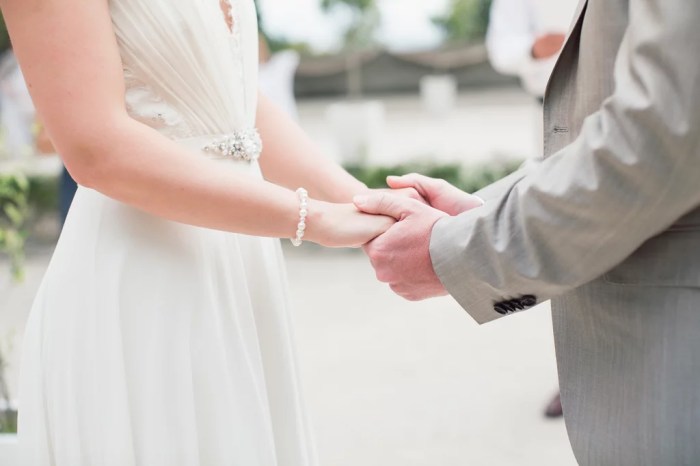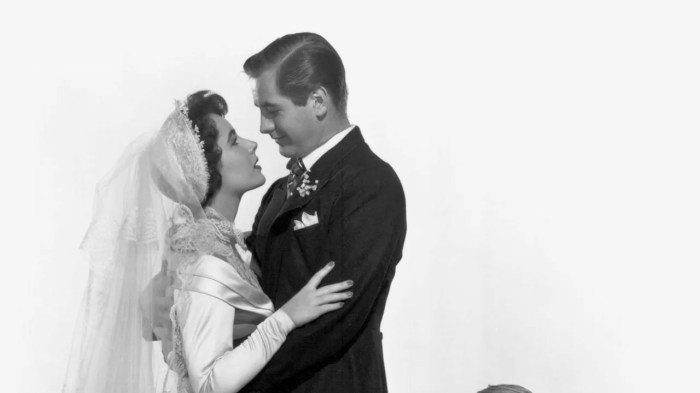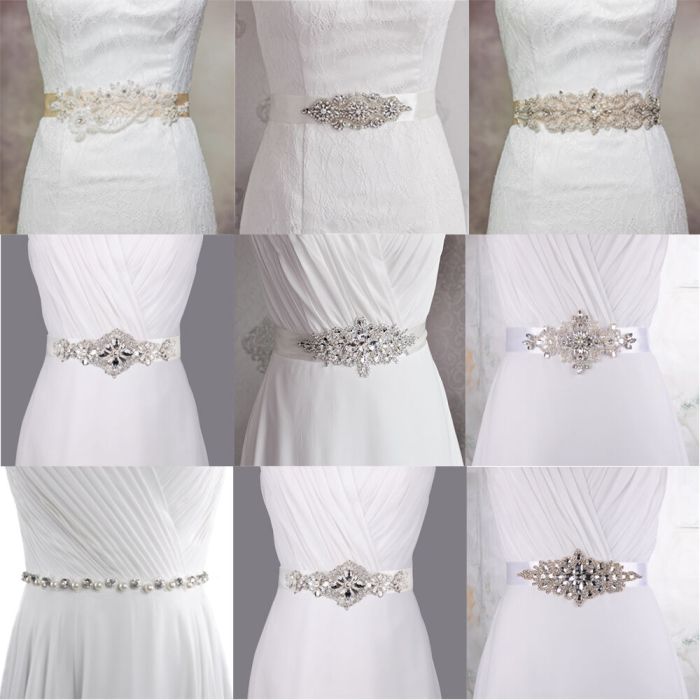Traditional Wedding Customs and Dress Financing
Who pays for the wedding dress – Historically, the responsibility for financing a wedding dress, like other wedding expenses, varied significantly across cultures and socioeconomic classes. Understanding these historical trends provides context for modern practices and the ongoing negotiation surrounding who pays for this significant purchase.
Historical Context of Wedding Dress Financing
In many Western cultures, particularly in the Victorian era and earlier, the bride’s family traditionally bore the brunt of wedding expenses, including the dress. This reflected societal norms that placed the financial burden of marriage largely on the bride’s family. In contrast, some non-Western cultures may have different traditions, with the groom’s family taking on more responsibility. The extent of the financial contribution often depended on the families’ wealth and social standing.
For example, elaborate gowns were a symbol of status for wealthier families, while simpler dresses were more common among less affluent families.
Financial Responsibilities Across Eras
The 20th century saw a gradual shift in the financial responsibilities of weddings. While the bride’s family often still contributed significantly, the groom’s family increasingly shared the burden. The rise of the “double income” household and changing social norms contributed to this evolution. Post-World War II, a more egalitarian approach to wedding expenses became more prevalent in many Western societies.
Evolution of Wedding Dress Financing Across Socioeconomic Classes
Throughout history, the cost and financing of wedding dresses have been closely tied to socioeconomic status. Wealthier families could afford elaborate, custom-made gowns, often using expensive fabrics and intricate embellishments. Less affluent families typically opted for simpler, more affordable options, sometimes making or altering dresses themselves to reduce costs. This disparity continues to some extent today, although mass-market options have broadened access to more affordable wedding dresses.
Modern Wedding Practices and Dress Costs
Current trends in wedding dress financing reflect a diverse range of approaches, shaped by evolving social norms, economic realities, and individual circumstances. There’s no single “right” way to handle the expense, and couples often find creative solutions that work for their unique situations.
Current Trends in Wedding Dress Financing
In many Western countries, a more egalitarian approach is common, with the bride and groom (and sometimes their families) sharing the cost of the wedding, including the dress. The exact contribution often depends on the couple’s financial situation and the overall wedding budget. In some cultures, however, traditional practices might still prevail, with one family bearing the primary responsibility.
Regional variations also exist, with certain areas exhibiting a stronger adherence to traditional financial models.
Examples of Financial Arrangements
Several financial arrangements are possible. The bride’s family might cover the dress entirely, the couple might split the cost, or the groom’s family might contribute. Some couples choose to finance the dress themselves through savings or loans. A growing trend is for the couple to pay for the dress independently, seeing it as a joint investment in their wedding day.
Impact of Modern Economic Realities
Modern economic realities significantly influence wedding dress costs and payment methods. The rising cost of living and increasing wedding expenses have led couples to seek more affordable options, including pre-owned dresses, renting, or choosing simpler designs. The availability of online retailers and budget-friendly boutiques has also expanded options for cost-conscious couples. Payment plans offered by bridal shops are becoming increasingly popular.
Budgeting and Financial Planning for the Wedding Dress
Creating a realistic wedding budget and establishing a clear plan for financing the wedding dress is crucial for avoiding financial stress. Open communication and careful planning are key to a successful and stress-free approach.
Sample Wedding Budget with Dress Allocation
A sample wedding budget might allocate 5-15% of the total budget to the wedding dress. This percentage can vary depending on the overall budget and the couple’s priorities. For example, a $20,000 wedding might allocate $1,000 – $3,000 for the dress, while a $50,000 wedding might allocate $5,000 – $7,500.
Step-by-Step Guide for Determining Dress Cost Coverage
- Discuss your individual financial situations and contributions honestly and openly.
- Set a realistic budget for the wedding dress, considering your overall budget and priorities.
- Explore different payment options and determine the best approach for your circumstances.
- Communicate your decisions transparently to your families, addressing any potential concerns or disagreements.
Strategies for Saving Money on the Wedding Dress

Source: marriage.com
Several strategies can help couples save money on the wedding dress without compromising style or quality. These include shopping during sales, considering pre-owned or sample dresses, choosing a less expensive designer, opting for simpler designs, or making alterations to an existing dress.
The Role of Family and Tradition in Wedding Dress Financing
Family expectations and cultural norms often play a significant role in shaping decisions about wedding dress financing. Open communication and a willingness to compromise are crucial for navigating these dynamics successfully.
Influence of Family Expectations and Cultural Norms
Traditional expectations about who pays for the wedding dress can vary widely depending on cultural background and family dynamics. In some families, there’s a strong expectation that the bride’s family will cover the dress, while in others, a more egalitarian approach is preferred. Understanding these expectations is essential for managing expectations and preventing potential conflicts.
Handling Disagreements About Wedding Dress Expenses
Disagreements about wedding dress expenses can arise from differing financial situations, cultural expectations, or personal preferences. Open communication, active listening, and a willingness to compromise are essential for resolving these disagreements amicably. Mediation by a neutral third party might be helpful in some cases.
Potential Sources of Conflict and Resolution Strategies
Potential sources of conflict include differing opinions on the dress’s style, cost, and who should pay. Effective communication, clearly defined budgets, and a collaborative approach to decision-making can minimize the likelihood of conflict. Compromise and mutual respect are vital in reaching mutually agreeable solutions.
Alternative Payment Methods for Wedding Dresses
Various payment methods exist for financing a wedding dress, each with its own advantages and disadvantages. Choosing the right method depends on the couple’s financial situation and preferences.
Comparison of Payment Methods
| Method | Pros | Cons | Typical Cost Range |
|---|---|---|---|
| Savings | No interest charges, builds financial responsibility | Requires significant saving time, may delay purchase | Varies greatly depending on savings |
| Loans (Personal or Wedding Loan) | Allows for immediate purchase, manageable monthly payments | Interest charges increase total cost, impacts credit score | Varies depending on loan amount and interest rate |
| Payment Plans | Spreads cost over time, avoids large upfront payment | May involve interest charges, requires consistent payments | Varies depending on shop policies and dress cost |
| Layaway | Secure the dress at a fixed price, no interest | Requires consistent payments, dress isn’t available until fully paid | Varies depending on shop policies and dress cost |
Advantages and Disadvantages of Payment Options
- Savings: Offers financial discipline but requires time.
- Loans: Provides immediate access but incurs interest charges.
- Payment Plans: Manages cost but might have interest.
- Layaway: Secures the dress but requires consistent payments.
Creative Financing Examples
Couples might combine savings with small contributions from family members or sell unwanted items to raise funds. Some may opt for a less expensive dress to allocate funds towards other aspects of the wedding.
Impact of Dress Selection on Budget
The style, designer, and materials significantly impact a wedding dress’s cost. Careful consideration of these factors is crucial for staying within budget.
Impact of Style, Designer, and Materials on Cost, Who pays for the wedding dress

Source: popsugar-assets.com
Designer dresses, intricate embellishments, and luxurious fabrics like silk or lace significantly increase the cost. Simpler styles and less expensive materials can help keep the cost down. The designer’s reputation also affects pricing.
Tips for Finding Affordable Wedding Dresses
Shopping during sales, considering pre-owned or sample dresses, opting for less expensive fabrics, and choosing a simpler design are effective strategies for finding affordable dresses without compromising style. Consider dresses from less-known designers or boutiques.
Comparing Prices and Negotiating with Bridal Shops
Comparing prices across multiple bridal shops and negotiating with vendors are crucial for securing the best possible price. Don’t hesitate to ask about discounts or sales, and be prepared to walk away if the price is too high.
Ethical Considerations in Wedding Dress Financing: Who Pays For The Wedding Dress
Ethical considerations should guide decisions about wedding dress financing, ensuring fairness, transparency, and respect for all parties involved.
Ethical Implications of Financial Arrangements

Source: vogue.com
Open communication and transparency are vital to avoid resentment or financial strain. It’s crucial to consider the financial capabilities of all involved parties and avoid putting undue pressure on anyone to contribute beyond their means.
Importance of Open Communication and Transparency
Honest conversations about financial contributions can prevent misunderstandings and conflicts. Clearly outlining the budget and who is responsible for what ensures everyone is on the same page.
Scenarios Where Ethical Considerations Influence Decisions
A scenario where one family is significantly wealthier than the other might necessitate a discussion about equitable contributions. Similarly, if one partner is significantly contributing more financially, it might be ethical to discuss adjusting the financial responsibilities accordingly.
Questions and Answers
What if I can’t afford my dream dress?
Consider alternatives like renting, buying pre-owned, or choosing a less expensive designer or fabric. Prioritize what’s most important to you and adjust your budget accordingly.
Traditionally, the bride’s family covers the cost of the wedding dress, but modern couples often share expenses or have other arrangements. The choice of dress style, such as a striking white and black wedding dress , can influence the overall budget. Ultimately, who foots the bill depends on individual circumstances and agreements between the families involved.
Can I negotiate the price of a wedding dress?
Yes, many bridal shops are willing to negotiate, especially during off-season sales or if you’re buying multiple items. Don’t be afraid to politely ask.
What if my family disagrees about who pays?
Open and honest communication is key. Explain your budget and preferences calmly, and consider involving a neutral mediator if necessary to facilitate a compromise.
How can I track my wedding dress expenses?
Use a spreadsheet or budgeting app to meticulously track all costs associated with the dress, including alterations, accessories, and taxes.

